If you’ve ever found yourself with low energy, brain fog, dizziness or fatigue – then chances are your iron levels could be low. Believe me, I know how it feels, I’ve been there once or twice.
Iron is important as it helps to create more red blood cells, and with it, improved blood flow and nutrient delivery around your body. Therefore, it pays to know how to increase iron absorption.
 If you’re having your iron levels checked by your health care provider, they’ll usually test your ferritin levels. This is what indicates how much iron you have. However, this isn’t always accurate as ferritin levels can fluctuate daily.
If you’re having your iron levels checked by your health care provider, they’ll usually test your ferritin levels. This is what indicates how much iron you have. However, this isn’t always accurate as ferritin levels can fluctuate daily.
Therefore, if you know how to get more iron into your body, that way you can take control of your own health – and iron levels.
Continue reading to learn more about Iron Absorption…
RELATED: Optimal Ferritin Levels For Athletes
Table of Contents
The Role of Iron
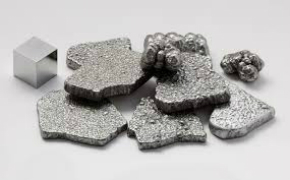 When you do take in more iron, your haemoglobin levels will rise. This is a protein found in red blood cells that helps to shuttle oxygen and nutrients around your body.
When you do take in more iron, your haemoglobin levels will rise. This is a protein found in red blood cells that helps to shuttle oxygen and nutrients around your body.
Iron is also a component of myoglobin, which is an oxygen storage protein that’s found in your muscles. This stored oxygen is used when your muscles don’t have oxygen readily available – during HIIT exercise for example.
Therefore, it’s iron’s role to carry oxygen and nutrients such as amino acids and glucose around your body. This will increase your performance, strength and recovery – among other benefits. So the more active you are, the more you might look to increase iron stores in your body using the below steps.
RELATED: Complete Review of Iron
Iron Absorption Considerations
The best way is to increase iron absorption is to choose an iron source that’s highly bioavailable – such as Performance Lab Multivitamin, or whole-foods like beef or spinach.
Just remember, there are two types of iron: heme, which is animal-based, and non-heme iron that comes from plant sources.
Heme iron holds more concentrated levels of iron compared to plant sources. But it’s also harder to digest (harder for your intestines). And it could be harmful to your body if consumed in large amounts long-term. (I)
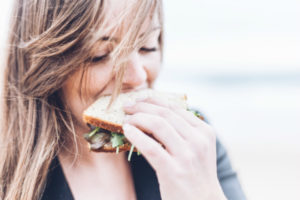 This is where you might want to look at using non-heme plant sources of iron (e.g. spinach or lentils). This is because absorption rates can be improved – all thanks to the bioavailability of the food source itself. And as a bonus, it’s healthier for the body – longterm.
This is where you might want to look at using non-heme plant sources of iron (e.g. spinach or lentils). This is because absorption rates can be improved – all thanks to the bioavailability of the food source itself. And as a bonus, it’s healthier for the body – longterm.
But there’s an issue with getting iron from plant sources alone…
Getting enough iron from plant sources can be hard, especially if you’re an active person with a fast metabolism. This is due to the large amounts of food required – which would equate to huge portions of plant ‘iron-rich’ foods – something that most people aren’t accustomed to.
RELATED: Does Exercise Reduce Iron Levels?
So what can we do? Eat only animal sources of iron which could cause toxicity in the body? Or struggle to get enough iron from plant foods?
Whichever you decide, and what I’ll discuss now, is that you can boost iron absorption with these simple tips. Making ‘iron abortion’ much easier – expanding your dietary options.
How To Increase Iron Absorption?
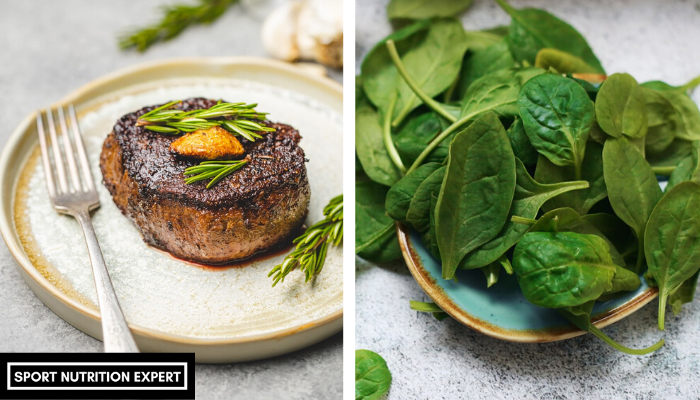
Food Combining for Improved Iron Absorption
Combine iron with vitamin C – either in supplement form or from whole-foods: This is because vitamin C works to capture and increase the amount of iron you can absorb, either from foods or via supplements.
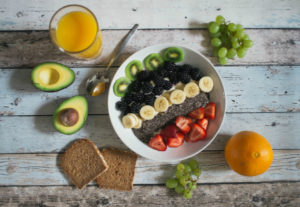 An example of this might be the combination of dark left vegetables with red bell peppers (high in vitamin C). Or eating fruits such as oranges after a meal containing iron, like beef for example.
An example of this might be the combination of dark left vegetables with red bell peppers (high in vitamin C). Or eating fruits such as oranges after a meal containing iron, like beef for example.
RELATED: Do Athletes Need More Iron
And remember, there are two forms of iron:
One being non-heme that comes from plants and supplements. And heme, which comes from animal sources such as beef and other dark meats.
As we’ve already discussed, heme iron (animal products) are ‘absorbed’ better, meaning you get more iron from animal sources, but they are harder to digest.
And non-heme (plant products) are more difficult to absorb due to the amounts needed. This is why you want to pair vitamin C with non-heme as much as possible, to improve your absorption rates (spinach and oranges or red peppers for example).
Foods Preventing Iron Absorption
Limit high consumption of coffee or polyphenols: Coffee has been shown to reduce iron absorption from foods and supplements, as EGCG prevents iron from being absorbed in the intestine. (II)
Examples may be green or black tea, along with fruits such as cranberries, strawberries, and blackberries to name a few. Then there’s also nuts such as pecans, and pistachios. And finally, dark chocolate, which contains 12 milligrams of catechin per 100g. (III)
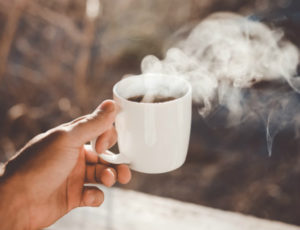
But like most of you, I’m a huge fan of polyphenols. Not only do they taste great (coffee and chocolate for example), but they also speed up recovery whilst reducing inflammation.
However, you may wish to avoid or limit polyphenol containing foods from sources such as tea, coffee, or blueberries. As it’s been shown to reduce your body’s ability to absorb iron when combined together. (IV)
Therefore, if you’re a heavy coffee drinker, or you simply want to increase iron absorption, steer clear of coffee or polyphenol containing fruits surrounding iron-rich meals or supplementation.
You should also look to avoid calcium, phosphorous, zinc, or magnesium as they compete against iron. And also eggs, as they can limit iron absorption by 28% due to their iron-binding capacity (called phosphoprotein). (V)
Stress and Iron Absorption
As for stress, either exercise-induced iron loss or from lifestyle changes; a rise in cortisol can have a negative effect on nutrient absorption, including iron. (VI) So chill out!
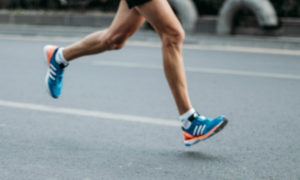 Furthermore, if you have a heavy foot strike (a form of exercise stress on the body), this can reduce your iron levels. As the blood literally breaks in your feet when hitting the ground (known as footstrike hemolysis).
Furthermore, if you have a heavy foot strike (a form of exercise stress on the body), this can reduce your iron levels. As the blood literally breaks in your feet when hitting the ground (known as footstrike hemolysis).
So if you’re looking for numerous ways to improve your iron levels, not only your ‘iron absorption’ – then aim to improve your footstrike and reduce the impact on your body – both physically and mentally.
Sport Nutrition Recommendation?
 To quickly recap; You can increase iron absorption with vitamin C, and you can also limit iron loss (helping to retain iron) from balancing your diet and timing your meals and snacks appropriately.
To quickly recap; You can increase iron absorption with vitamin C, and you can also limit iron loss (helping to retain iron) from balancing your diet and timing your meals and snacks appropriately.
For example, it’s a good idea not to consume high polyphenol EGCG foods or drinks with iron. As this limits the amount of iron absorbed from foods or supplements.
Secondly, emotional stress can also have an impact on your iron absorption rates. Along with physical stress from exercise, such as footstrike hemolysis.
For the best type of iron to use, this will all depend on your food preferences and your availability. Some of you may choose dark meats several times per week, while others will stick to only vegetables.
For the best supplement containing iron, read my review on Performance Lab Whole-Food Multi Review
Whichever you decide (animal, vegetarian, vegan or supplementation), knowing that you can increase heme and non-heme iron absorption with vitamin C – and that by limiting certain foods (EGCG foods and drinks) surrounding your iron-rich meals, you’ll soon be feeling a whole lot better.

Leave a Reply